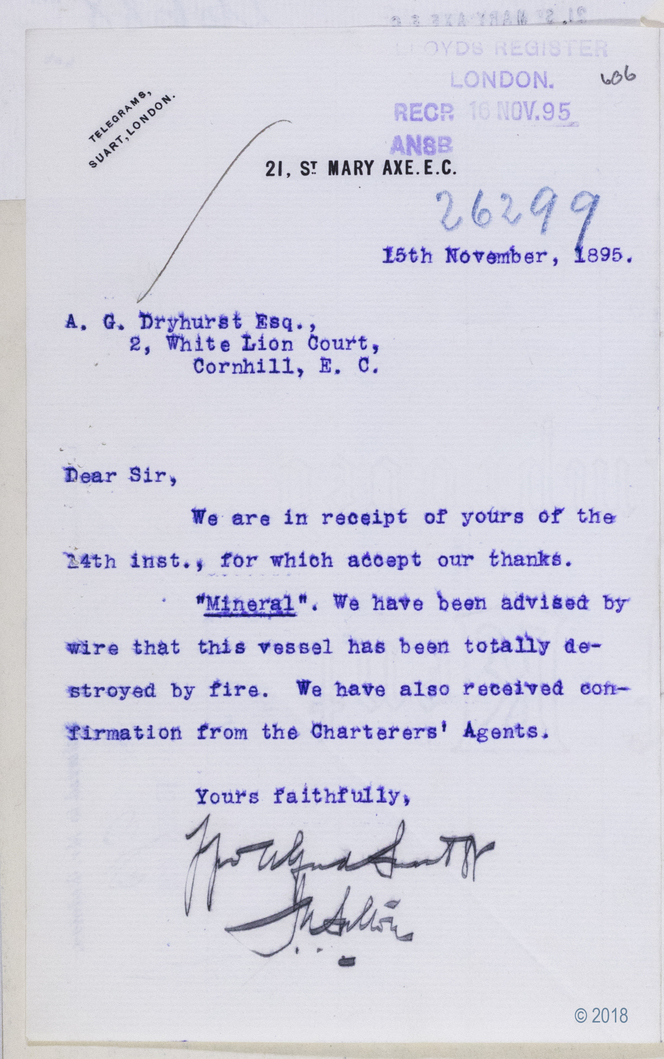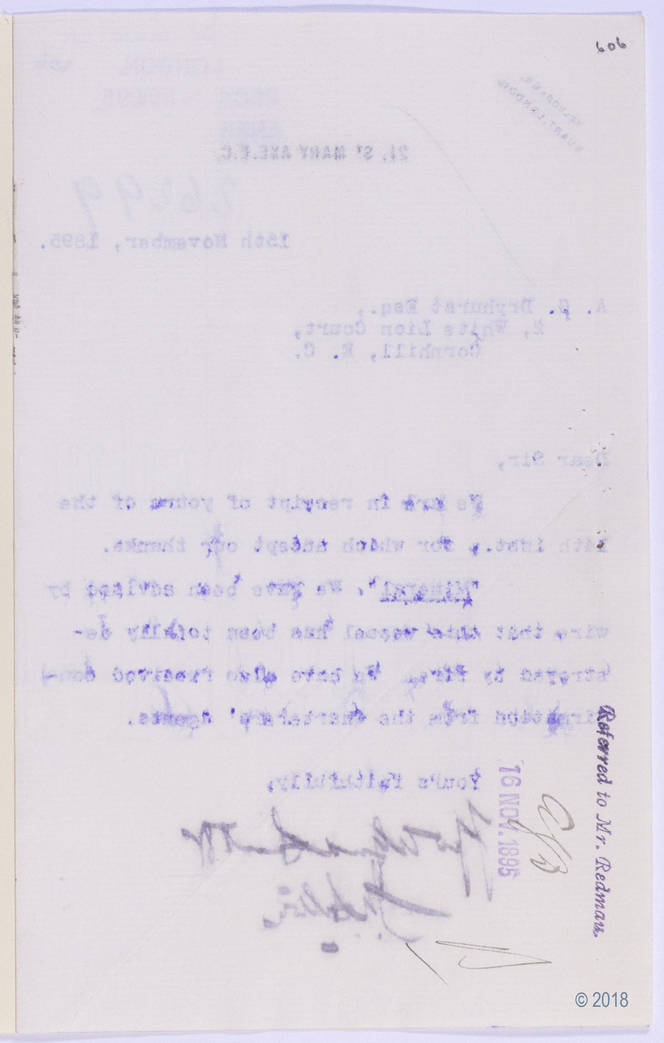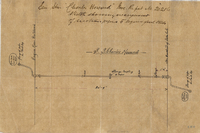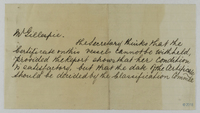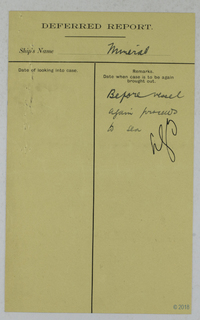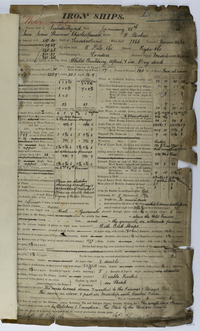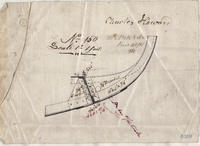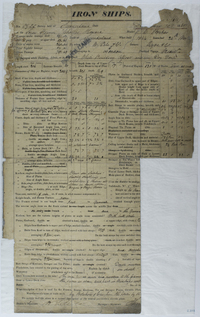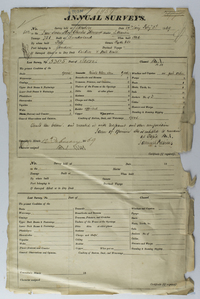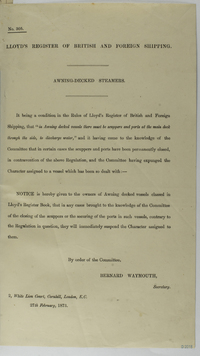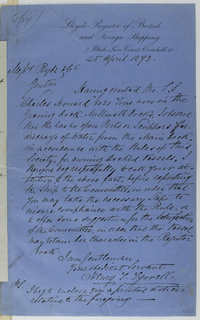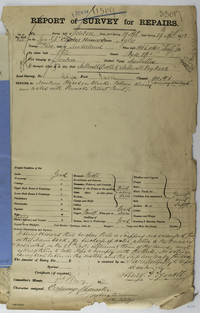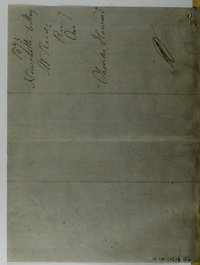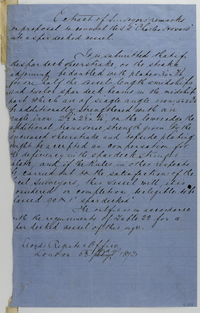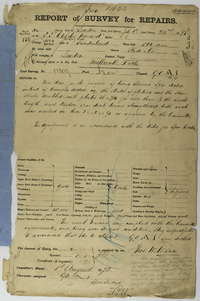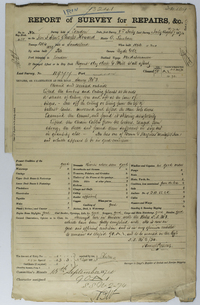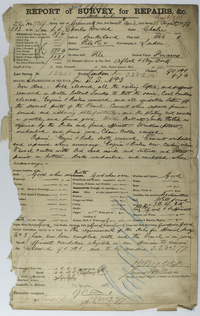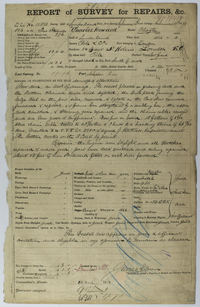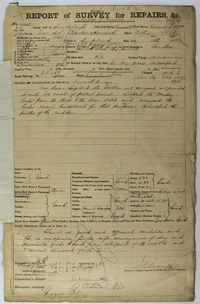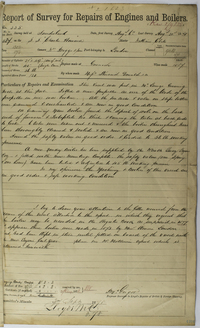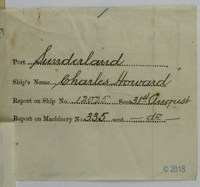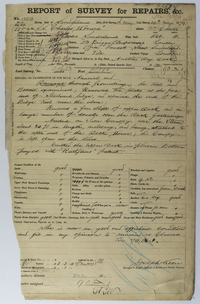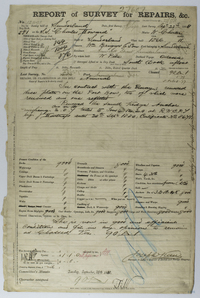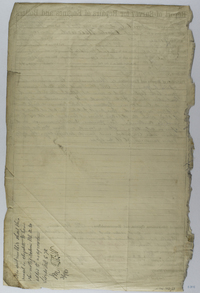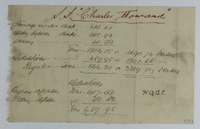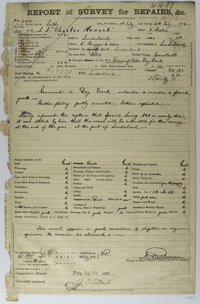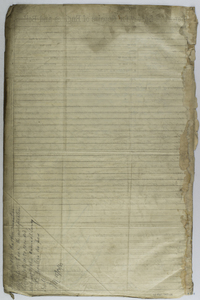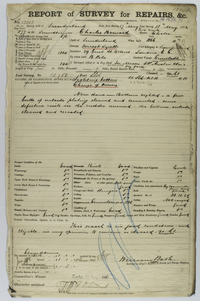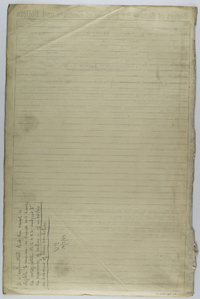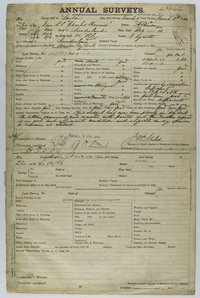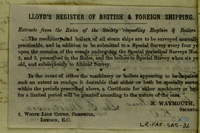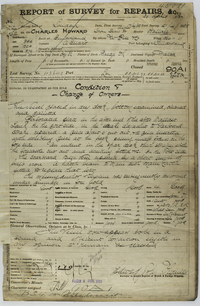- Related documents Related
- Full details Details
- Report document? Report?
Use the data export button to extract customised data sets from the Ship Plan and Survey Report Collection. Available in TSV and CSV formats.
Date recorded as the time of writing.
15/11/1895
The year in which a vessel’s construction is completed.
1866
The port or place in which the vessel’s construction took place, at the time of writing.
Sunderland
A unique number allocated to a specific vessel by an official registration authority of the country of registry (flag) that the vessel belongs to (post. 1855).
56748
Additional numbers that feature on a given record that may be used for identification.
26299
The listed port to which a given vessel belongs.
Sunderland
The individual and/or organisation listed
A Suart
Name of the individual/entity/organisation responsible for authoring the record
Jn Allin
A vessel’s means of propulsion.
Steam
Is the steamer assisted by sail?
No
A ship’s total internal capacity of a ship measured in register tons from the top of the floors to the tonnage deck.
876
Description/specifications listed of the vessel’s engines and machinery. (The engines/machinery may have been surveyed separately before being assigned to a vessel).
Compound Engine, 2 cylinder
The country, at the time of writing, where a vessel’s engines were constructed.
United Kingdom
Confirmation as to whether the vessel was equipped with refrigeration machinery to aid in the transport of frozen or chilled cargo/goods.
No
Does the vessel possess an auxiliary power source?
No
Is electric lighting fitted to the vessel?
No
Used to indicate the capability of early reciprocating steam engines, based on dimensions rather than performance. It is not a true indication of actual engine power.
127
Prescribed by flag/registration authorities, and usually excludes a small part of the stern. It is measured from the foreside of the stern at the extreme top to the afterside of the stern post.
249.0
Measurement from the underside of the upper deck on the centre line to the upper side of the bottom plating.
16.9
Name of ship as recorded on the record
Mineral - 1890
The individual and/or organisation listed as having been responsible for constructing the vessel. This can/may be the same as the owner and/or manager.
W Pile
The country in which the vessel’s construction took place, at the time of writing.
United Kingdom
Official administrative title (often printed) of a record used by Lloyd’s Register or external organisations.
Letter
The country (flag) that a vessel is registered to, at the time of writing.
United Kingdom
Records that constitute Lloyd’s Register’s first official encounters with a specific vessel, e.g. a survey report.
N
An officially licensed mariner (post 1850) holding ultimate command and responsibility for a vessel.
W Ryder
Location where the document is written.
London
Predominant material(s) utilised in a vessel’s construction.
Iron
A ship’s total internal volume in ‘register tons’ (replaced by gross tonnage post 1982).
1304
Tonnage derived by deducting from the gross register tonnage the capacity that in unavailable for cargo, e.g. machinery space, fuel, crew accommodation etc.
849
Location of construction for a vessel’s engines.
Greenock
Kinkaid, Donald & Co
Is machinery fitted at the aft of the vessel?
No
Generally a smaller additional auxiliary boiler (often used while the vessel is at port).
No
Name of the Proving House responsible for the public testing and certification of a vessel’s anchors and/or chain cables.
No
The official record pronounced by the Committee
Fire/Explosion
Also referred to as extreme breadth. The distance from the extreme starboard side to the extreme port side.
30.1
Physical extent of a record.
1
Report an issue with this document
Have you noticed missing or incorrect data or images for this document?
Please let us know and we will rectify the issue as soon as possible.

